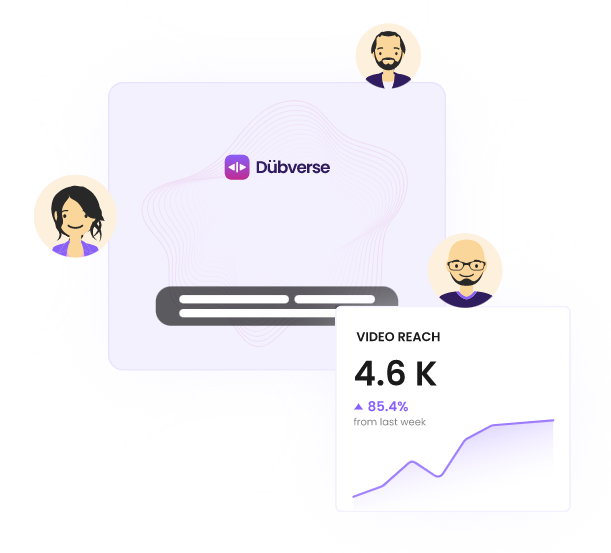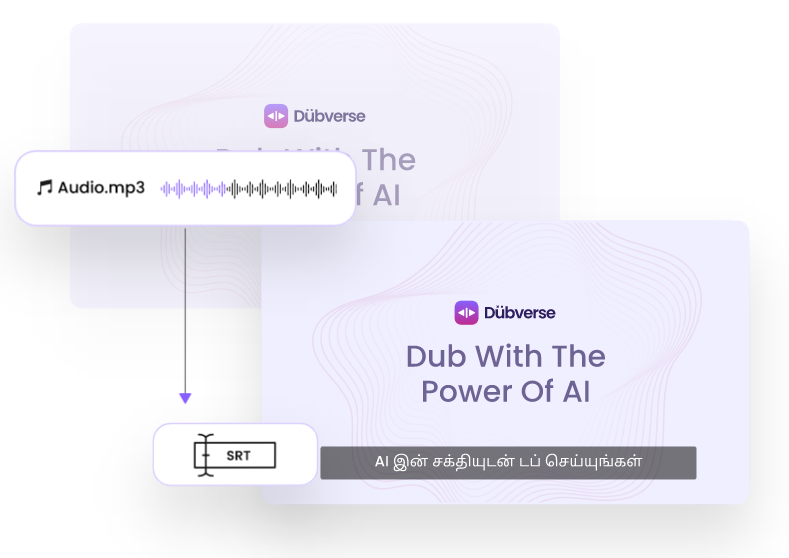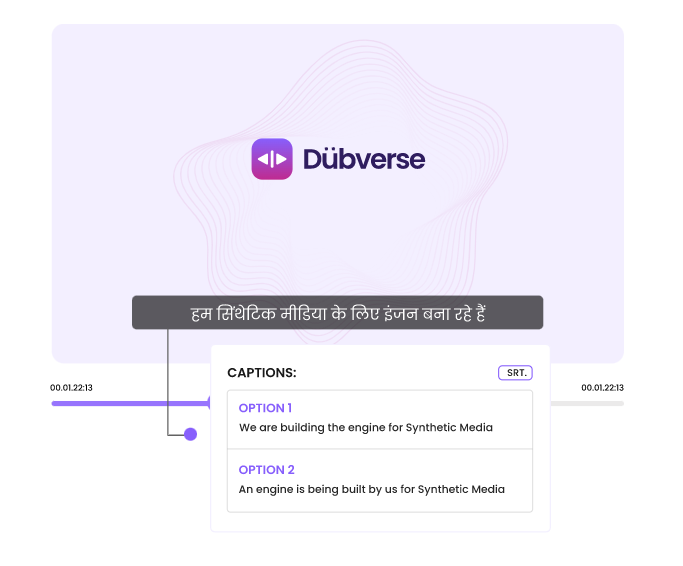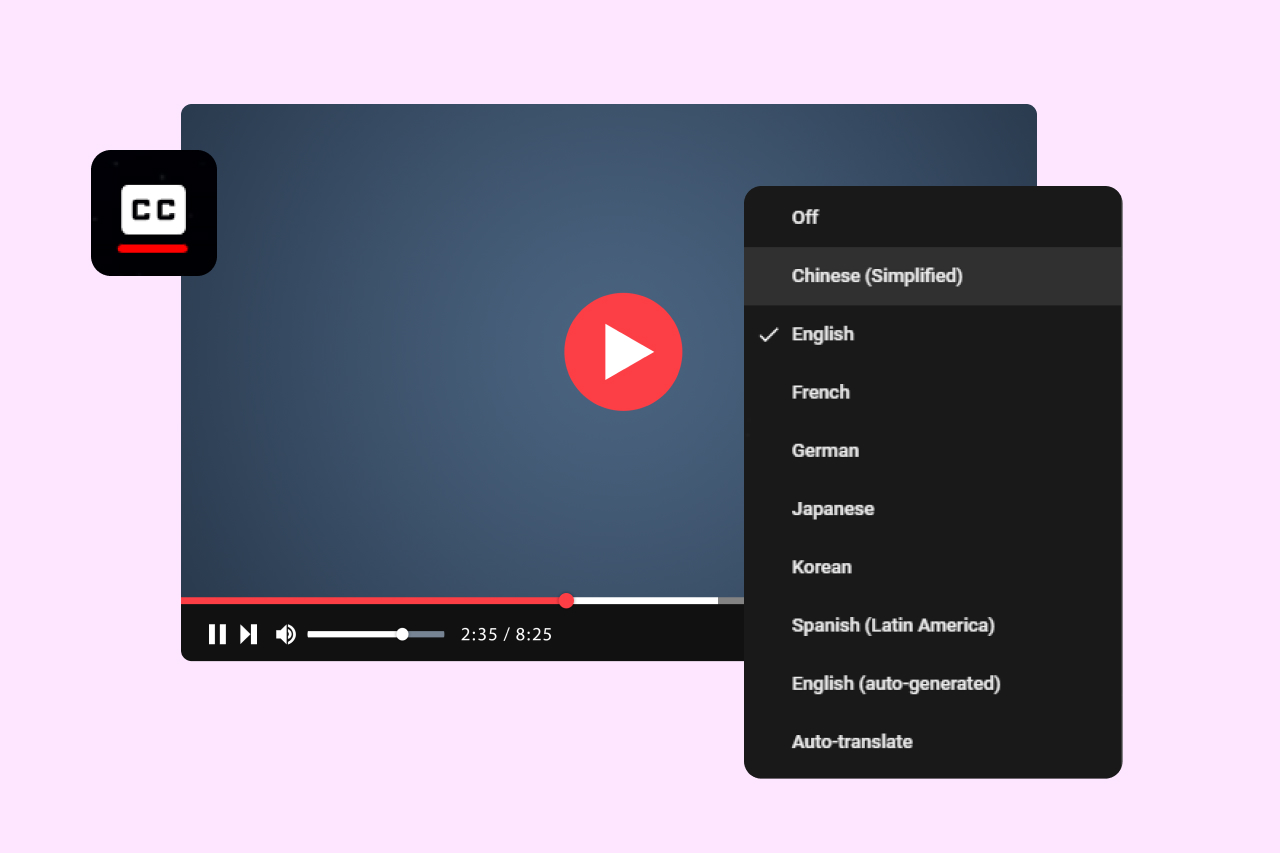In the kingdom of search engines, if Google is considered to be King, YouTube should be the Queen by its side. More businesses are continuing to see the value of the second most popular search engine and have begun putting YouTube on a higher pedestal for gaining traction. But creating videos is only half the battle. Ensuring your message is understood is the (more important) other half. This is where subtitles on YouTube videos make all the difference. These little lines of text to support what your video is saying can have a huge impact on multiple facets of your branding. By how much of a difference does subtitling your content really make?
What does recent data say about subtitles in videos?
Here is a summary of the recent studies on the impact of closed captions in videos:
- Improved comprehension: A study published in the National Library of Medicine found that individuals with hearing impairments who used subtitles while watching YouTube videos had significantly better speech comprehension of the content compared to those who did not use subtitles.
- Increased engagement: A study published in the International Journal of Human-Computer Studies found that subtitles can help increase student engagement and retention, as they allow viewers to follow along with the content even if they are distracted or have difficulty hearing the audio.
- wide appeal: A survey conducted by the International Association of Conference Interpreters found that subtitles are widely used and appreciated by a diverse group of viewers, including those who are deaf or hard of hearing, those who do not speak the language of the video, and those who are in situations where they cannot turn up the volume.
So it is evident that closed captions seem to benefit everyone: particularly all ages, abilities, and cultures. But let’s get granular. Say you want to dub your content into multiple languages and publish that content onto YouTube. Does it make sense to add closed captions to every single video? And if you plan on doing so, what are the costs?

Why YouTube Subtitles are essential in 2023
YouTube closed captions are important for multilingual videos for a variety of reasons. Let’s address the most important ones making closed captions on YouTube a must in 2023:
Better accessibility to reach more people with SEO:
As studies show, subtitles allow people who are deaf or hard of hearing to access and understand the audio content of a video. They also allow people who do not speak the language of the video to follow along and understand the content. The significance this has for multilingual content is unparalleled. With subtitles, you can facilitate the translation of the video into other languages, making it accessible to a wider audience. In other words, your goal of reaching a broader audience with your multilingual content is made possible directly through subtitling your content.

Improved visibility through search engine optimization:
Think of it like subtitles like an SEO bonus. Subtitles can improve the search engine optimization (SEO) of a video as they serve as additional text input that search engines can index and use to understand the content of the video. Ultimately, this can lead to higher rankings and more visibility for the video in search results. This is particularly important for multilingual videos, as subtitles can help the video rank for keywords in different languages and reach a wider audience.
Boosted engagement from the content being shared more frequently:
As detailed above, subtitles directly increase viewer engagement. Captions can be particularly useful for videos shared on social media platforms, as they allow users to watch and understand the content without the need to turn up the volume. This can be especially important for users who are in public places or who are scrolling through their feeds with the volume turned off. Specifically for multilingual videos, subtitles can help viewers who do not speak the language of the video understand and engage with the content.
Enhanced comprehension for native speakers:
While captions are primarily intended to assist viewers who are deaf or hard of hearing, or who do not speak the language of the video, they can also be helpful for native speakers. Captions can help retain viewer attention and facilitate understanding of the content, especially in situations where the volume cannot be turned up or the audio is difficult to hear.
Facilitated translation to reach global audiences better:
Subtitles can facilitate the translation of a video into other languages, making it accessible to a wider audience. This can be particularly useful for businesses and organizations that want to reach a global audience. It can also be useful for creators and companies that produce content in languages other than English, as it allows them to reach a larger audience without having to produce subtitles themselves.

User-generated content to help build communication and trust:
Most YouTube creators rely on user-generated subtitles to make their videos accessible to a wider audience. This can be especially important for creators who produce content in languages other than English, as it allows them to reach a larger audience without having to produce subtitles themselves. By adding user-generated subtitles to your multi-language content, you build a bridge of communication and trust with your audience members. This audience connection can serve to boost your engagement and your brand’s loyalty.
Boosted reach and impact from accessibility benefits:
By making a video more accessible to a wider audience through subtitles, creators and organizations can increase the reach and impact of their content. Subtitles can help a video reach a global audience, regardless of language barriers, and can make it more likely that the content will be shared and viewed by a larger number of people. Not only does this help you beat your competition, but your chances of going viral also increase when more people are able to resonate with your content.
Improved user experience from better engagement with content:
Subtitles can improve the user experience for both deaf and hearing viewers. For deaf and hard-of-hearing viewers, subtitles provide an important means of accessing audio content. For hearing viewers, subtitles can help retain viewer attention and facilitate understanding of the content, especially in situations where the audio is difficult to access.
Increased accessibility for non-native speakers:
For any creator planning on going global with their content, subtitles are a must. Subtitles can be particularly useful for non-native speakers of the language of the video, as they can help facilitate understanding of the message within the content. This can be especially important for educational or instructional videos posted to YouTube, as subtitles can help non-native speakers follow along and learn more effectively.
Improved accessibility for language learners:
For language learners specifically, subtitles have been shown to be an important tool for improving comprehension and retention of the content. By providing a written translation of the audio content, subtitles can help language learners follow along and understand the content more effectively.

Overall, adding captions to YouTube videos can have a number of unexpected benefits, including improved comprehension and retention, increased social media engagement, improved SEO, and facilitated translation. In addition to increasing accessibility and engagement, captions can be a useful tool for enhancing the overall effectiveness and reach of video content.
But are there any costs of adding YouTube subtitles to your content?
How difficult is it to add close captions to your YouTube videos?
The difficulty of adding closed captions to YouTube content will depend on the tools and resources available to you and your level of familiarity with the process. To make it simple, we can break down the different options available to you, as well as their level of difficulty.
First, let’s define ‘difficult’ as the amount of effort, time, and money a method of captioning demands. Based on these criteria, here are a few different options for adding closed captions to YouTube content:
YouTube’s Automatic Captions:
YouTube has an automatic captioning feature that uses machine learning to generate subtitles for a video. While this option is quick and easy to use, the accuracy of the automatic captions can vary, and it is generally recommended to review and edit the captions to ensure they are accurate and effective.
Difficulty level: Medium. Greater time and effort invested but low cost.
Third-party transcription and captioning tools:
There are a number of third-party tools available that can transcribe audio content and generate closed captions. These tools can be more accurate than YouTube’s automatic captions, but they may also require a fee for their use.
Difficulty level: Medium. Lower time and effort investment but the cost is subject to be variable.
Manually adding captions:
You can also manually add captions to your YouTube content by typing them out or uploading a subtitle file. This option requires the most time and effort, but it can be the most accurate and effective way to add captions to your content.
Difficulty level: High. High effort and time investment, but pretty much no cost.
Overall, the difficulty of adding closed captions to your YouTube content will depend on your specific needs and resources. If you have a clear audio recording and are comfortable using captioning tools, the process can be relatively straightforward. If you have a more complex audio track or are not familiar with the captioning process, it may be more difficult.
Where Dubverse fits in

To sum up, captions increase the accessibility of video content for individuals who are deaf or hard of hearing, as well as those who do not speak the language of the video. They also help increase viewer engagement and retention, and they can improve the search engine optimization (SEO) of a video, among other benefits. But the challenges that come with captioning every video you publish to YouTube can drag your content production down. Dubverse’s AI-generated subtitling can save you the hassle of transcribing every single video you put onto YouTube. Here are a few ways in which Dubverse accomplishes this:
- Efficiency: Our AI-generated subtitles can significantly reduce the time and effort required to transcribe and caption a video, as they can automate much of the process. This can make the process of adding subtitles much more efficient and cost-effective, particularly for large amounts of content.
- Accuracy: AI-generated subtitles with Dubverse have the potential to be more accurate and reliable than manual transcription, as they use time-tested machine learning algorithms to analyze the audio content and generate a transcript. This can help produce more accurate and effective closed captions.
- Scalability: When you rely on AI-generated subtitles, you can make it easier to scale up the production of captioned content. The main reason for this scalability is that AI can automate the transcription and captioning process for large amounts of content. This can be particularly useful for businesses and organizations that produce a large volume of video content.
- Wide appeal: AI-generated subtitles can be useful for a wide range of content producers and viewers, including individuals, businesses, and organizations. They can be particularly useful for multilingual content that you want to produce, as they can facilitate the translation of a video into other languages. Perhaps you make language learning content, or you want to produce instructions videos on to use your product in 13 different languages. Dubverse has your back.

All in all, AI subtitling is a technology that is poised to revolutionize the way we consume media. With the ability to automatically generate subtitles for videos in multiple languages, AI subtitling makes it easier for people around the world to access and understand video content. And that’s not all, subtitling content on YouTube can help to bridge linguistic barriers and make it easier for people who speak different languages to communicate and collaborate. As more and more video content is produced and shared online, the demand for AI subtitling will only continue to grow, making it a technology that is sure to be all the rage in 2023 and beyond.


